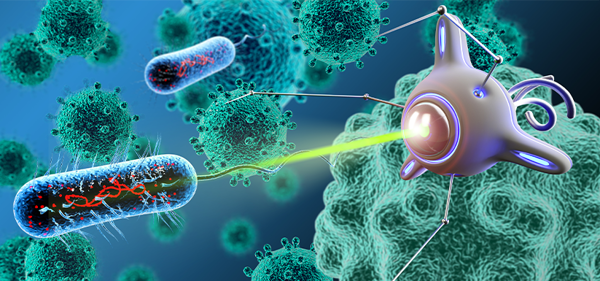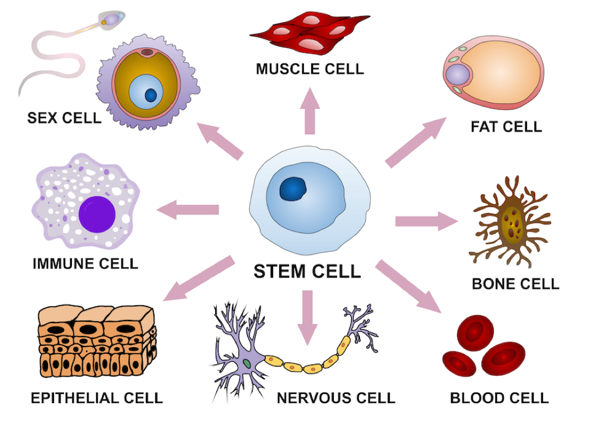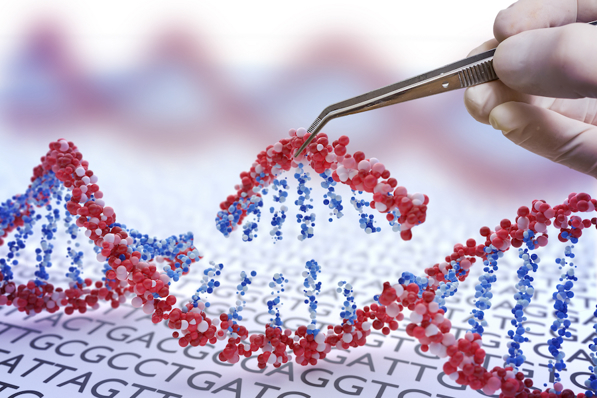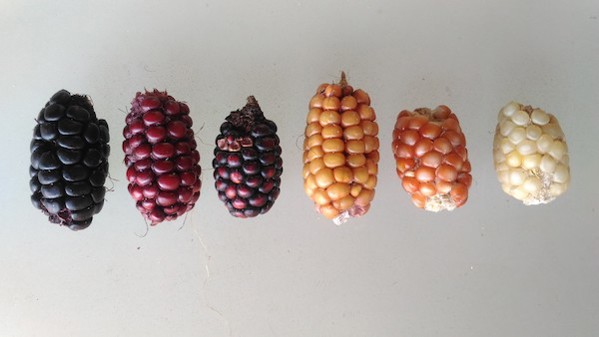
Do you think nanotechnology will outpace and prevent the need for cloning?
May 19, 2006

- Related Topics:
- Biotechnology,
- Futuristic science,
- Cloning
A middle school student from California asks:
"I don’t think we will ever need to clone humans because we will have “body 2.0” and organs such as the heart will not be needed, because the blood will use nanotechnology to pump itself through the body. Do you think that body 2.0 will prevail over cloning? Why or why not?"
Will our future kin be an upgrade of ourselves? Absolutely. Will we replace most of ourselves with artificial devices? Probably not, and I'm not sure we'd want to.
My guess is that we'll still use biology to keep ourselves alive longer. And cloning will probably be a part of it. But why not Body 2.0?
Let's first look at this from a practical standpoint. Could we replace most of our body with various mechanical devices?
Busy bots
For example, imagine replacing blood with little nanobots that carry oxygen and nutrients. These nanobots might even eliminate the need for a heart because they can move on their own.
No more heart attacks. Sounds good, except blood does a lot more than carry our nutrients and waste. The blood does all sorts of things that are not easy to mimic.

For example, blood is the transport system for the immune system. The immune system is an intensely complex thing that changes all the time depending on what is around in the environment. For example, when a new flu virus appears, our immune system responds by making antibodies that defeat it. Are the nanobots going to do that?
Blood also moves hormones around that control all sorts of things. For example, when we get scared our brain releases adrenaline into the blood. The adrenaline then goes to our heart and causes it to beat very fast.
Of course, with a Body 2.0, there won't be a heart. So these nanobots have to "know" how to tell your body to move faster when you need to run away. Perhaps they can be taught to respond to adrenaline like the heart does (as long as we still have adrenal glands making that adrenaline) but this is all starting to seem unnecessarily complex. Why not just use what we have instead of reinventing the wheel?
If it’s broken, grow a new one?
These nanobots are supposed to solve the problem of heart attacks by getting rid of the heart. How about if we just grow a new one instead?
This solves the problem of having too few donor hearts. And if we can grow them using our own cells, there won't be any rejection problems either. The way this'll probably happen is by using stem cells made from us to grow a new heart.
Unlike other cells, embryonic stem cells can grow into any other type of cell. So the idea would be to clone a cell from you to make these stem cells and then grow the organ you need. This is called therapeutic cloning.
We won't need to make a copy of someone and take their heart. We can just grow the heart. Or a liver. Or fix a spinal cord. Or … anything!

Now, growing a heart from a stem cell is as hard as it sounds. But we are making some progress. The first steps have already been taken by a team led by Dr. Esmail Zanjani at the University of Nevada, Reno.
He and his team of researchers are able to inject human embryonic stem cells into sheep embryos for making humanoid organs. For example, a sheep liver that has been injected with these stem cells contains up to 15% of human liver cells.
Perhaps eventually, we can grow an entire organ by having other animals to grow them for us. Ultimately, we will want to grow the organs from scratch without needing another animal.
Young-looking
We may also be able to fix what is broken without replacing it. How? By adding genes that reverse the aging process, for example. Adding genes or replacing genes is collectively known as gene therapy.
There are still technical problems to deal with (although fewer than redesigning the entire body!). Clinical trials have demonstrated that this technology has a few more kinks to work out before it’s ready to be widespread. However it's really only a matter of time before gene therapy goes mainstream.
So what could we do with this technology? Let's look at what Dr. Lee Sweeney has done recently in rats.
Using gene therapy, Dr. Sweeney has found a way to turn back the biological clock. He is able to reverse the loss of muscle in rats that happens from aging (as well as degenerative disease). Essentially, he gave a 27-month-old mouse the body of a 6-month-old. In human terms, this is the same as giving an 80 year old human the body of a teenager.
He was able to do this by giving the rats an extra copy of a gene that is needed in our own bodies to make muscle mass. This means that if we can identify a single gene or a small number of genes that can change a trait, they’d make good candidates for gene therapy.

Gene therapy holds promise in many other areas as well. Other researchers are looking at ways of permanently boosting red-blood-cell count (and thus aerobic endurance), controlling metabolism and hunger hormones (to prevent obesity), and spurring hair growth, not to mention using this technology to treat disease.
Researchers are saying that it may be possible in the next two decades to increase the body's healing power, induce it to regenerate lost limbs or organs, even to slow or halt human aging.
Stick with what you know
So as you can see, we already have a pretty good system in our own bodies and we can use the toolkit nature has given us to solve our problems. Why throw the baby out with the bathwater? Why not use what we have in ways that extend our lives without having to make a completely new prototype as Body 2.0 would do?
Of course, none of this deals with the effect all of this would have on society, the human race, or the planet itself. Of particular worry would be if we really did replace large chunks of our bodies with various mechanical devices.
In our current environment, mechanical upgrades seem like an advantage. But if things change, they'll become a liability. This is part of what makes animals so resistant to dying off -- the diversity of their genes.
By creating identical, perfect humans, we eliminate that diversity. Now when conditions change, we won't have the diversity that has allowed us to adapt throughout evolutionary history.. If the change in the environment is severe enough, it could wipe us out.

And speaking of the environment, what type of impact would much longer-lived humans have on the planet? Not good would be my guess whether these extended lives come from nanobots, cloning or gene therapy.
If we upgrade our bodies to the point where we are living hundreds of years or perhaps longer, overpopulation would be a huge stress on the planet. And how can we ethically solve that?
And who would determine who will live longer? These advancements could become exclusive services available only to the more privileged members of society.
We as scientists must constantly not only be asking "can we do it" but also "why are we doing this." After all, for now we are only human.
Read More:
- Kurzweil AI: Human Body Version 2.0
- NewScientist: More about the work of Dr Esmail Zanjani and his team
- Fast Company: Gene therapy and what it could enable

Author: Dr. Aaron Shafer
When this answer was published in 2006, Aaron was a postdoctoral fellow in the Department of Molecular and Cellular Physiology, studying activation mechanisms of G protein-coupled receptors in Brian Kobilka's laboratory. Aaron wrote this answer while participating in the Stanford at The Tech program.
 Skip Navigation
Skip Navigation
